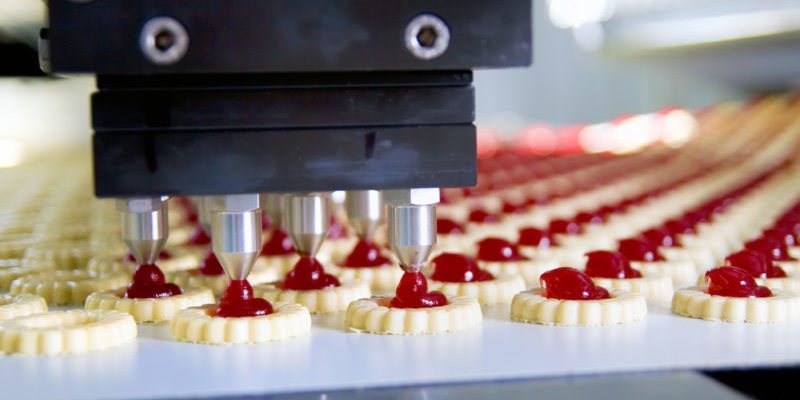Programmable logic controllers, or PLCs, are found everywhere in the food and drink industry around the globe. You might not even be aware of how many PLCs currently exist in your business. Yet, despite having become something of a workhouse in food processing automation, PLCs still have an air of mystery surrounding them.
What are PLCs? And how do you get the best functionality out of PLCs? Today, we’re going to tell you how.
What are Programmable Logic Controllers?
PLC, as you know, stands for “programmable logic controller,” an industrial computer that is used to control a variety of electronic and mechanical processes within manufacturing, food production, and other automation environments.
PLCs are programmed a number, using one of the five common programming languages: Structured Text, Ladder Diagram, Instruction List, Sequential Function Charts, or Function Block Diagram.
How Do PLCs Work?
PLCs were invented over 50 years ago and have become an integral part of the manufacturing process. Not only did PLCs change how assembly lines ran, they also altered how lines are sequenced and controlled. In short, PLCs have been making processes more efficient for many years.
Since then, the purpose behind PLCs hasn’t changed. While the technology surrounding programmable logic controllers has advanced, they still tend to operate the same way.
How PLCs Work in Processing and Packaging
PLCs are ideal for environments that use basic control schemes and minimal I/O. However, this is changing as PLCs become more and more common, giving them more technological prowess to complete more challenging tasks. PLCs can greatly benefit processing and packaging, because they can automate specific tasks and reduce the amount of manual labor needed.
When it comes to automation, plant owners often have to decide which operations should be automated, based on their budget. This often means choosing one or two pieces of machinery, such as a batch oven or mixers, that will have the greatest impact on output. A PLC is highly cost-effective when installed in a single machine.
More advanced PLCs can communicate with one another. Sometimes, this requires a PAC—or programmable automation controller—to initiate communication between two machines, but the lines between PLCs and PACs are blurring. Both PLCs and PACs can be used in conjunction for system integration, controlling processing, and gathering data.
From a food processing and packaging perspective, having machines function in a harmonized manner can increase productivity and efficiency, while also diminishing human error.
How to Get the Best Out of PLCs
Although PLCs (and PACs) have become so interwoven into the manufacturing environment, there is still some apprehension surrounding them—especially if and when a problem occurs. Therefore, you need to know how to get the most out of your PLCs and keep them operational to avoid downtime that negatively impacts production and distribution.
Here are some things to consider:
Proper Maintenance of PLCs
When everything is running smoothly, you might overlook the fact that PLCs are, at their most basic level, machines. Your PLCs need routine maintenance. Not only does this uncover potential dysfunctions, but it also reveals any issues that could be hindering production.
Should a PLC malfunction without warning, production will come to an abrupt halt, resulting in delays and costing your food business money.
So if you haven’t scheduled maintenance for your PLCs in a while, it is time to call EZSoft. PLCs are relatively easy to replace, repair, and upgrade with a professional electrical engineer on the job.
Integrating PLCs Into Safety and Security
Today, most automated systems are running on a single PLC, rather than using separate PLCs to control a single process. High-end PLCs even have security and safety processes built-in, but many companies continue to use third-party applications for cybersecurity and password protection.
A recent study from Kaspersky Labs found that 21 percent of manufacturers reported breaches in security and lost intellectual property. In other words, basic protections are not enough. You don’t want to leave your food production plant or recipe database vulnerable to cyber attacks. Integrated security features, such as data encryption, password protection, and authentication, are priceless and should be something you discuss with your system integrator.
Learn About PLC Technology
In the past, the technologies used to construct PLCs seemed like an alien language from a far-off galaxy. Unless you were part of the engineering community, PLCs were a veritable black box. While trained engineers and programmers are still necessary in the creation and installation of PLCs at food processing plants, the end user—you and your employees—will find modern day PLC systems a bit more intuitive.
However, food businesses still tend to find themselves dependent on third-party applications to deal with their PLC systems, and that can make the processes within your facility cumbersome. It doesn’t have to be that way.
With training and support from experts, like the team at EZSoft, you and your employees can better operate and manage the system. Furthermore, EZSoft can customize HMIs and SCADA to suit your business, as well as assist with issues remotely.
Need Help With Your PLCs?
Overall, PLCs can be used a variety of ways for food processing automation. If you want to maximize the usage of the PLCs present in your food production line, it is important that you continue on with routine maintenance, learn about the system, and have enough security to keep your business safe. In doing so, you will optimize the entire production process.
As a highly trusted innovator of PLCs, HMI, and SCADA integration, EZSoft has solutions customized for your food business. EZSoft offers a wide variety of products and services that streamline batch processes, enhance data management, and more. Give us a call at (484) 568-5040 or fill out the contact form.







